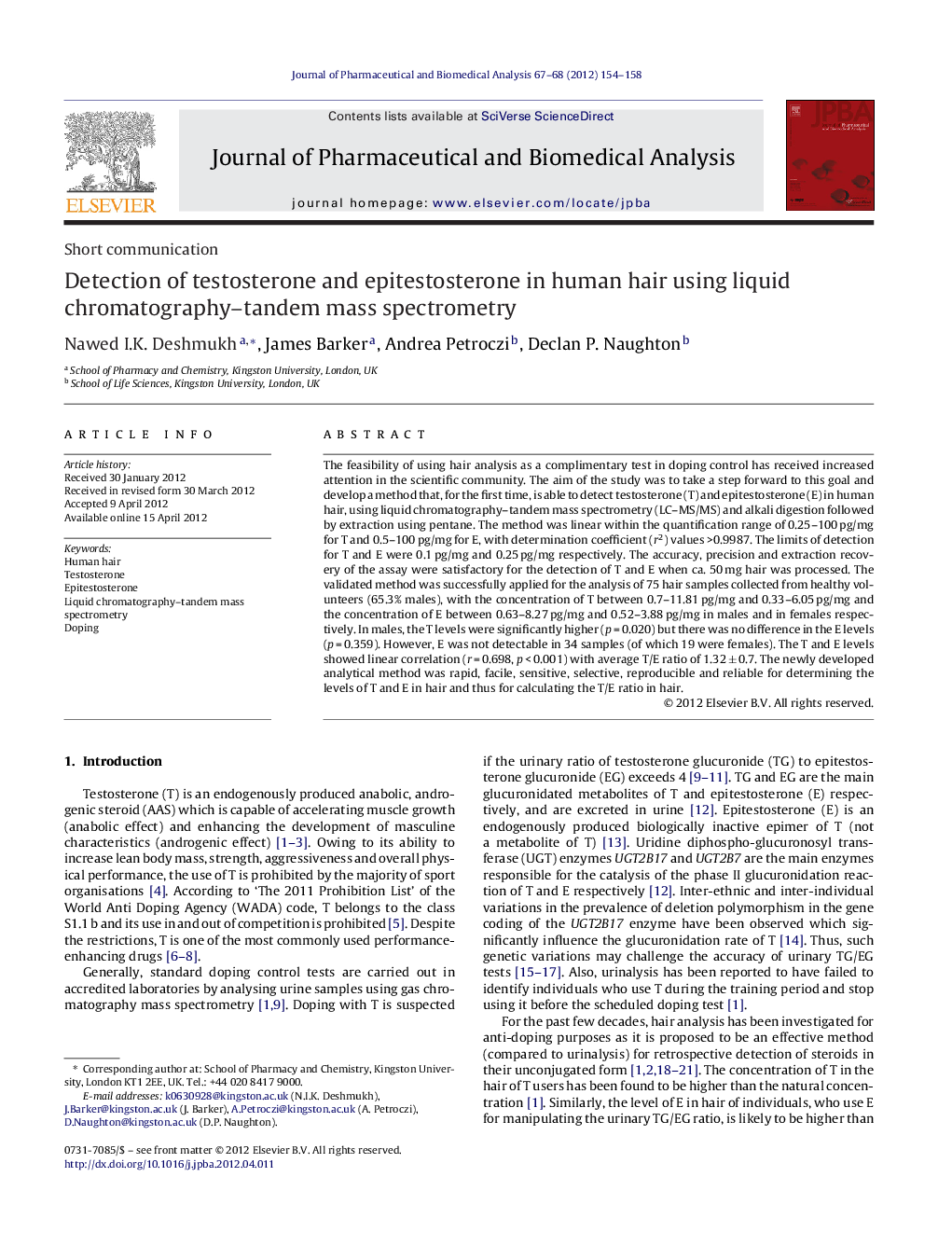| Article ID | Journal | Published Year | Pages | File Type |
|---|---|---|---|---|
| 7633151 | Journal of Pharmaceutical and Biomedical Analysis | 2012 | 5 Pages |
Abstract
The feasibility of using hair analysis as a complimentary test in doping control has received increased attention in the scientific community. The aim of the study was to take a step forward to this goal and develop a method that, for the first time, is able to detect testosterone (T) and epitestosterone (E) in human hair, using liquid chromatography-tandem mass spectrometry (LC-MS/MS) and alkali digestion followed by extraction using pentane. The method was linear within the quantification range of 0.25-100 pg/mg for T and 0.5-100 pg/mg for E, with determination coefficient (r2) values >0.9987. The limits of detection for T and E were 0.1 pg/mg and 0.25 pg/mg respectively. The accuracy, precision and extraction recovery of the assay were satisfactory for the detection of T and E when ca. 50 mg hair was processed. The validated method was successfully applied for the analysis of 75 hair samples collected from healthy volunteers (65.3% males), with the concentration of T between 0.7-11.81 pg/mg and 0.33-6.05 pg/mg and the concentration of E between 0.63-8.27 pg/mg and 0.52-3.88 pg/mg in males and in females respectively. In males, the T levels were significantly higher (p = 0.020) but there was no difference in the E levels (p = 0.359). However, E was not detectable in 34 samples (of which 19 were females). The T and E levels showed linear correlation (r = 0.698, p < 0.001) with average T/E ratio of 1.32 ± 0.7. The newly developed analytical method was rapid, facile, sensitive, selective, reproducible and reliable for determining the levels of T and E in hair and thus for calculating the T/E ratio in hair.
Related Topics
Physical Sciences and Engineering
Chemistry
Analytical Chemistry
Authors
Nawed I.K. Deshmukh, James Barker, Andrea Petroczi, Declan P. Naughton,
